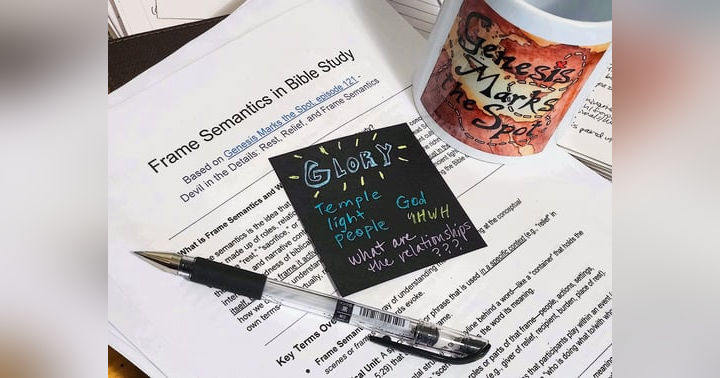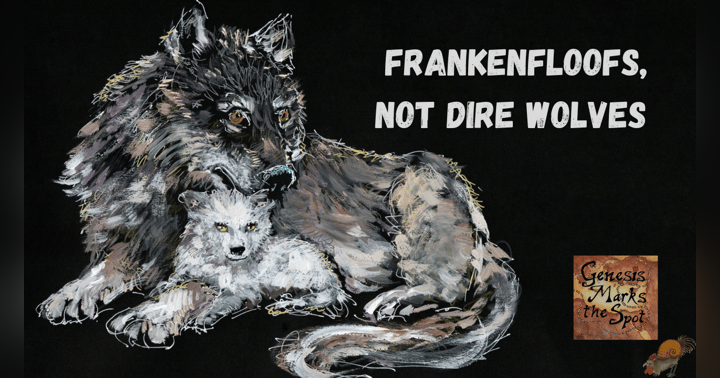Between Curse and Covenant: How Frame Semantics Reshapes Our View of Noah’s Drunkenness

What if Noah’s infamous vineyard episode wasn’t a relapse into sin—but a reframed echo of Eden?
In our latest episode of Genesis Marks the Spot, we explored Genesis 9 through the lens of frame semantics, a method that helps us trace theological, narrative, and symbolic patterns in Scripture. If you haven’t listened yet, you can catch the full episode here, where we tackle the meaning of Noah’s drunkenness, its literary ties to Adam’s fall, and how this post-Flood scene might reintroduce—but also evolve—the biblical “Fall Frame.”
Why Frame Semantics?
Frame semantics is a linguistic and interpretive tool that helps readers understand not just what a text says, but what kind of conceptual world it activates. Instead of isolating verses, we ask questions like:
- What cultural or emotional associations does this scene evoke?
- What narrative or symbolic patterns are being repeated—or subverted?
- What shared “frames” are activated when similar themes (like nakedness, fruit, or judgment) show up?
This method is especially helpful when comparing Genesis 3 (the Fall of Adam and Eve) with Genesis 9 (Noah’s post-Flood vineyard scene). Both stories involve fruit, exposure, shame, and judgment—but what’s different is just as important as what’s the same.
Introducing the Frame Semantics Study Guides
To accompany this episode, I’ve created a downloadable Frame Semantics Worksheet that you can use for personal study, small groups, or classroom settings. You’ll find:
- A breakdown of the Hebrew terms that shape the passage
- The theological and cultural “frames” activated by each scene
- A side-by-side comparison of Genesis 3 and Genesis 9
- A reflection on how Noah’s story both mirrors and transforms the Eden narrative
🔗 Click here to download the study guide for Genesis 9:21 (PDF)
(This version will remain static to match the episode’s analysis, even as I iterate on the basic format in the future.)
🔗 Also, here is a link to the main set of frame semantics study guides (PDF)
Key Takeaways from the Analysis
- Drunkenness is more than a personal vice in Genesis 9—it’s a symbolic trigger that sets off a cascade of meaning: vulnerability, shame, judgment, and the echoes of Eden.
- Noah may not “fall” like Adam. Instead of being judged, he becomes the judge. In a surprising twist, Noah plays the role that God played in Eden—pronouncing a curse and revealing a new human capacity for discernment.
- Three interpretive options emerge:
- Fall Repetition – Noah is a second Adam, and humanity’s problems are back.
- Frame Inversion – Noah is a righteous man taken advantage of in a vulnerable state.
- Hybrid Frame – The Fall frame is reactivated, but now with a twist: humans can judge rightly.
Why It Matters
The story of Noah’s drunkenness doesn’t just replay the Fall—it recasts it. Humanity is still vulnerable. Disorder returns even after judgment. But now, God’s image-bearers are called to share in the moral governance of the world.
This changes how we read both Noah and ourselves. It’s not just about failure—it’s about discernment, covenant responsibility, and the sobering truth that judgment is now in human hands--but to be righteous, that judgment needs to align with God.
Join the Conversation
I’d love to hear how you use the worksheet, and whether frame semantics helps you read the Bible with fresh eyes. Is Noah’s story a fall, an inversion, or something entirely new?
Comment below or connect with me on Facebook or Instagram to continue the conversation.
And don’t forget—if you’d like to help shape future versions of these study guides, I’m looking for readers and listeners to test them out and offer feedback. If that’s you, drop me a message!









